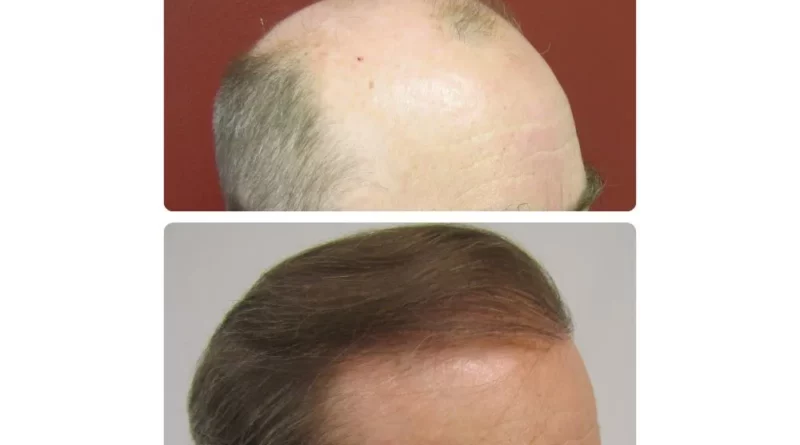What Factors Improve Success Rates For Hair Restoration?
Hair restoration is more than just a cosmetic procedure; it’s a life-changing journey for many people. Whether you’re considering a hair transplant or researching non-surgical options, understanding the factors that affect success rates is essential. Hair restoration Michigan offers various advanced solutions tailored to different needs. So, let’s break it down and explore what truly makes hair restoration effective.
About Hair Loss
Hair loss affects millions worldwide, often impacting self-esteem and confidence. While genetics is a major culprit, factors like stress, hormonal imbalances, and lifestyle choices also play significant roles. But here’s the good news: advancements in medical technology have made hair restoration procedures more successful than ever before.
The Follicular Unit
Understanding the basics is crucial. Hair restoration often involves transplanting follicular units, which are tiny groupings of 1 to 4 hair strands. These units are taken from donor areas (typically the back or sides of your scalp) and implanted into thinning or balding areas. The precision of this process greatly impacts the overall success rate.
How Can Grafts Become Damaged?
During a hair transplant, the survival of grafts is paramount. Grafts can become damaged if mishandled, exposed to improper temperatures, or kept outside the body for too long. This is why choosing an experienced surgeon and a reputable clinic is critical.
Transection Rates
Transection refers to the accidental cutting or damaging of hair follicles during extraction. High transection rates mean fewer viable grafts for implantation. Advanced techniques, such as Follicular Unit Extraction (FUE), minimize this risk by carefully isolating each follicle.
Reasons For Transection
Several factors can cause transection, including outdated tools, poor technique, or even the natural curvature of hair follicles. This is why you’ll want a surgeon who understands the nuances of hair anatomy and uses cutting-edge equipment.
Factors That Influence Hair Restoration Success Rate
Surgeon Expertise
This is a big one. The skill and experience of your surgeon directly impact the outcome. An experienced surgeon not only minimizes risks like transection but also designs a hairline that looks natural and suits your face.
Technique Used
Techniques like FUE and Follicular Unit Transplantation (FUT) have varying success rates. FUE is less invasive and leaves minimal scarring, but FUT might yield a larger number of grafts in one session. The right technique depends on your specific needs and goals.
Donor Area Quality
The quality of the donor area plays a crucial role. If your donor area has thick, healthy hair, the chances of success are higher. Thin or sparse donor areas may limit the number of viable grafts.
Post-Procedure Care
What you do after the procedure is just as important as the surgery itself. Follow your surgeon’s instructions carefully, including how to wash your hair, avoid sun exposure, and maintain a healthy diet.
Clinic Facilities
State-of-the-art facilities ensure better outcomes. Clinics with modern equipment and sterile environments reduce the risk of infection and other complications.
FUE at Houston Hair Transplant Center
The Houston Hair Transplant Center is a prime example of excellence in hair restoration. Their FUE technique is performed with precision, ensuring minimal discomfort and high graft survival rates. They focus on creating natural-looking results tailored to each patient.
Cost of a Hair Transplant
Cost is often a deciding factor, but it’s essential to see this as an investment in yourself. The price varies depending on the number of grafts needed and the clinic’s reputation. While cheaper options may be tempting, they often come with lower success rates. Prioritize quality over cost to ensure the best results.
What is Hair Restoration Success Rate?
Success rates for hair restoration procedures are generally high, with most clinics reporting a range between 85% and 95%. However, these numbers can vary based on individual factors such as age, health, and the extent of hair loss. A realistic understanding of what to expect is key to satisfaction.
Get the Best Hair Restoration
Choosing the right clinic, following post-procedure care, and setting realistic expectations can dramatically improve your chances of success. Take your time to research and consult with professionals who prioritize your well-being.
The Bottom Line
Hair restoration is a blend of art and science. By focusing on surgeon expertise, modern techniques, and quality aftercare, you can achieve a natural, long-lasting transformation. Remember, the journey to restoring your confidence starts with making informed decisions.
FAQs
1. What is the most successful hair restoration technique?
FUE is considered one of the most successful techniques due to its minimally invasive nature and high graft survival rate.
2. How long does it take to see results?
You’ll start noticing new hair growth within 3 to 6 months, with full results visible after 12 to 18 months.
3. Are there risks involved in hair restoration?
While risks are minimal, they may include infection, scarring, or poor graft survival if performed by an inexperienced surgeon.
4. Can anyone undergo a hair transplant?
Not everyone is a candidate. Factors like donor area quality, age, and overall health determine eligibility.
5. Is hair restoration permanent?
Yes, transplanted hair is generally permanent as it’s taken from areas resistant to hair loss.




